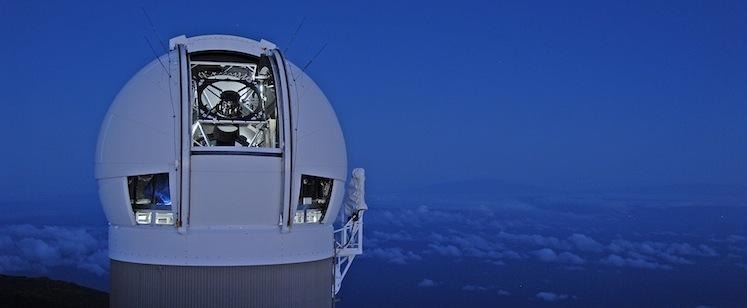New Mini-Moon Discovered Orbiting Earth
This isn't April fools day, and we're not pulling your leg – there is indeed a second rocky companion out in space orbiting Earth – besides our moon. This miniature-moon, as it's nicknamed, goes by the scientific name "2016 HO3". It's an asteroid, technically, but it's nearly unique in our known history of Earth and nearby objects. This quasi-satellite or near-Earth companion is "the best and most stable example to date" of such a space body. "One other asteroid — 2003 YN107 — followed a similar orbital pattern for a while over 10 years ago, but it has since departed our vicinity. This new asteroid is much more locked onto us," said Paul Chodas, manager of NASA's Center for Near-Earth Object (NEO) Studies at the Jet Propulsion Laboratory in Pasadena, California.
Chodas suggests that this asteroid is "caught in a little dance with earth." As you'll see in the video below, this rocky companion of Earth sometimes orbits very close to our Earth, sometimes quite far away, but always maintains an orbit around the Earth as it moves around our Sun.
This space object has been estimated by NASA as being later than 120 feet (40 meters) and smaller than 300 feet (100 meters) in diameter.
April 27, 2016, by the Pan-STARRS 1 asteroid survey telescope on Haleakala, Hawaii (as pictured below). The telescope is operated there by the University of Hawaii's Institute for Astronomy and funded by NASA's Planetary Defense Coordination Office.
"Since 2016 HO3 loops around our planet, but never ventures very far away as we both go around the sun, we refer to it as a quasi-satellite of Earth," said Chodas.
"Our calculations indicate 2016 HO3 has been a stable quasi-satellite of Earth for almost a century, and it will continue to follow this pattern as Earth's companion for centuries to come."

This mini-moon is never closer to Earth than 38 times the distance of our Earth to our proper moon. At its furthest distance, this little rock is approximately 100 times the distance of our moon.
According to NASA, other similar space rocks have come close to being a near-Earth companion like this one, but only this one has fit the bill so extremely well. Expect the "Mini Moon Tracker" apps to be arriving soon.
